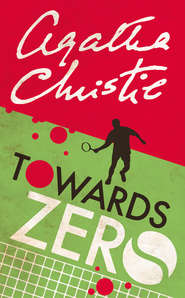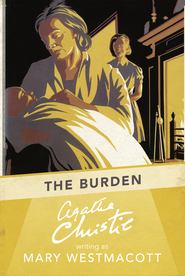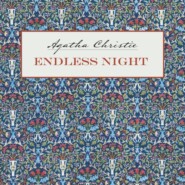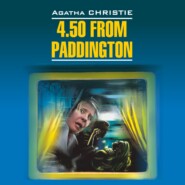По всем вопросам обращайтесь на: info@litportal.ru
(©) 2003-2025.
✖
The Blood-Stained Pavement: A Miss Marple Short Story
Автор
Год написания книги
2018
Настройки чтения
Размер шрифта
Высота строк
Поля
Agatha Christie
A classic Agatha Christie short story, available individually for the first time as an ebook.Joyce Lempiere tells the Tuesday Night Club of an incident that occurred five years ago when she was vacationing at a small inn on the Cornish coast. She was painting a picture of the front of the inn, including details of wet bathing suits drying on the balcony of Denis and Margery Dacre, when she realised she had included blood stains on the pavement. A few days later Margery is found having drowned and the Club are called to solve the mystery.
THE BLOOD-STAINED PAVEMENT
A Short Story
by Agatha Christie
Copyright
This short story is entirely a work of fiction. The names, characters and incidents portrayed in it are the work of the author’s imagination. Any resemblance to actual persons, living or dead, events or localities is entirely coincidental.
Published by HarperCollinsPublishers Ltd 1 London Bridge Street London SE1 9GF
www.harpercollins.co.uk (http://www.harpercollins.co.uk)
‘The Blood-Stained Pavement’ was first published in Royal Magazine, March 1928, and in the USA as ‘Drip! Drip!’ in Detective Story Magazine, 23 June 1928.
This ePub edition published April 2012.
Copyright © 2012 Agatha Christie Ltd.
A catalogue record for this book is available from the British Library
All rights reserved under International and Pan-American Copyright Conventions. By payment of the required fees, you have been granted the nonexclusive, nontransferable right to access and read the text of this e-book on-screen. No part of this text may be reproduced, transmitted, downloaded, decompiled, reverse-engineered, or stored in or introduced into any information storage and retrieval system, in any form or by any means, whether electronic or mechanical, now known or hereinafter invented, without the express written permission of HarperCollins e-books.
EPub Edition © 2012 ISBN: 9780007486632
Version: 2017-04-18
Contents
Cover (#uceea21a5-914d-5771-aa19-60fa30ff1bff)
Title Page (#ud765cf4b-18a2-54c3-b647-fd0cec2fc56b)
Copyright
The Blood-Stained Pavement
About the Publisher (#litres_trial_promo)
The Blood-Stained Pavement
‘The Blood-Stained Pavement’ was first published in Royal Magazine, March 1928, and in the USA as ‘Drip! Drip!’ in Detective Story Magazine, 23 June 1928.
‘It’s curious,’ said Joyce Lemprière, ‘but I hardly like telling you my story. It happened a long time ago – five years ago to be exact – but it’s sort of haunted me ever since. The smiling, bright, top part of it – and the hidden gruesomeness underneath. And the queer thing is that the sketch I painted at the time has become tinged with the same atmosphere. When you look at it first it is just a rough sketch of a little steep Cornish street with the sunlight on it. But if you look long enough at it something sinister creeps in. I have never sold it but I never look at it. It lives in the studio in a corner with its face to the wall.
‘The name of the place was Rathole. It is a queer little Cornish fishing village, very picturesque – too picturesque perhaps. There is rather too much of the atmosphere of “Ye Olde Cornish Tea House” about it. It has shops with bobbed-headed girls in smocks doing hand-illuminated mottoes on parchment. It is pretty and it is quaint, but it is very self-consciously so.’
‘Don’t I know,’ said Raymond West, groaning. ‘The curse of the charabanc, I suppose. No matter how narrow the lanes leading down to them no picturesque village is safe.’
Joyce nodded.
‘They are narrow lanes that lead down to Rathole and very steep, like the side of a house. Well, to get on with my story. I had come down to Cornwall for a fortnight, to sketch. There is an old inn in Rathole, The Polharwith Arms. It was supposed to be the only house left standing by the Spaniards when they shelled the place in fifteen hundred and something.’
‘Not shelled,’ said Raymond West, frowning. ‘Do try to be historically accurate, Joyce.’
‘Well, at all events they landed guns somewhere along the coast and they fired them and the houses fell down. Anyway that is not the point. The inn was a wonderful old place with a kind of porch in front built on four pillars. I got a very good pitch and was just settling down to work when a car came creeping and twisting down the hill. Of course, it would stop before the inn – just where it was most awkward for me. The people got out – a man and a woman – I didn’t notice them particularly. She had a kind of mauve linen dress on and a mauve hat.
‘Presently the man came out again and to my great thankfulness drove the car down to the quay and left it there. He strolled back past me towards the inn. Just at that moment another beastly car came twisting down, and a woman got out of it dressed in the brightest chintz frock I have ever seen, scarlet poinsettias, I think they were, and she had on one of those big native straw hats – Cuban, aren’t they? – in very bright scarlet.
‘This woman didn’t stop in front of the inn but drove the car farther down the street towards the other one. Then she got out and the man seeing her gave an astonished shout. “Carol,” he cried, “in the name of all that is wonderful. Fancy meeting you in this out-of-the-way spot. I haven’t seen you for years. Hello, there’s Margery – my wife, you know. You must come and meet her.”
‘They went up the street towards the inn side by side, and I saw the other woman had just come out of the door and was moving down towards them. I had had just a glimpse of the woman called Carol as she passed by me. Just enough to see a very white powdered chin and a flaming scarlet mouth and I wondered – I just wondered – if Margery would be so very pleased to meet her. I hadn’t seen Margery near to, but in the distance she looked dowdy and extra prim and proper.
Вы ознакомились с фрагментом книги.
Приобретайте полный текст книги у нашего партнера:
Приобретайте полный текст книги у нашего партнера:

















